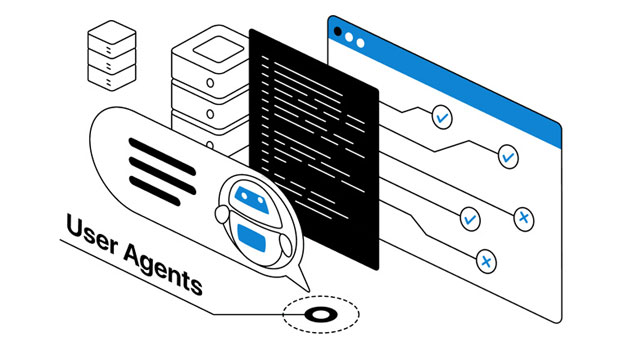In the digital world, internet users are constantly seeking faster, more secure, and reliable ways to access websites and services. residential proxies have become increasingly popular for those looking to maintain anonymity, bypass geo-blocks, and access restricted content. However, a common question arises: Does buying residential proxies affect access latency? Latency, the delay in accessing data over the internet, plays a crucial role in determining user experience. In this article, we will explore how residential proxies work, the potential impact they can have on latency, and how users can mitigate any negative effects.Understanding Residential ProxiesBefore diving into the impact of residential proxies on latency, it's important to understand what residential proxies are. A residential proxy is an intermediary server that routes internet traffic through real residential IP addresses rather than data center IPs. This makes residential proxies appear as though the user is browsing from a genuine home network, which adds a layer of authenticity and security.Unlike data center proxies, which are hosted on centralized servers, residential proxies are associated with real devices, making them more difficult for websites to detect and block. Users who buy residential proxies often do so for purposes like web scraping, managing multiple social media accounts, or overcoming geographic restrictions.What Is Latency?Latency refers to the time delay between the request for data and the delivery of that data. It’s measured in milliseconds (ms) and plays a vital role in the performance of web browsing and online services. High latency results in slow website loading times, buffering during video streaming, and delays in online transactions.There are several factors that contribute to latency, including the distance between the user and the server, the quality of the internet connection, and the network infrastructure in place. With the rise of residential proxies, users often wonder whether these proxies can introduce additional delays.How Residential Proxies Can Impact LatencyBuying residential proxies can indeed influence latency, though the effect depends on several factors:1. Increased Routing Distance Residential proxies route traffic through real residential IP addresses. These IP addresses may be located far from the original server or the user, especially if the user is connecting through a geographically distant proxy. As a result, the data must travel a longer distance, which can increase latency.2. Proxy Server Overload When multiple users share the same residential proxy pool, the proxy servers may experience congestion, leading to delays in processing requests. This can add to latency, especially if the proxy provider doesn’t manage the pool efficiently.3. ISP Interference Since residential proxies use real IP addresses assigned by ISPs, the quality of the Internet Service Provider’s infrastructure can also impact latency. Some ISPs have higher-quality networks that reduce latency, while others may cause delays due to network issues, throttling, or routing inefficiencies.4. Proxy Quality Not all residential proxies are created equal. High-quality residential proxies from reputable providers typically maintain fast and reliable speeds with minimal latency. On the other hand, low-quality proxies with poor infrastructure or heavy traffic can significantly impact access latency.Latency vs. Anonymity: The Trade-offOne of the primary reasons people buy residential proxies is for anonymity. Residential proxies hide the user’s original IP address and replace it with one from a legitimate residential network. While this enhances privacy and bypasses geo-blocks, it can also result in higher latency.In many cases, users need to balance the benefits of increased privacy and security with the potential drawbacks of slower internet speeds. For users who prioritize anonymity over speed, the latency increase might be a small price to pay for the added protection. However, for tasks that require low latency, such as gaming or real-time trading, even a slight delay can be problematic.Factors That Can Mitigate the Impact of LatencyWhile buying residential proxies can introduce latency, there are several ways to minimize its effects:1. Choose High-Quality Residential Proxy Providers The most important step in reducing latency is choosing a reliable residential proxy provider. Reputable providers often offer fast, stable proxies with minimal downtime and low latency. Researching customer reviews, proxy speed tests, and service quality can help ensure that you choose a provider that meets your needs.2. Select Geographically Proximal Proxies To reduce latency, it’s a good idea to choose residential proxies that are geographically close to the target websites or servers. This reduces the distance the data must travel, helping to lower the overall latency.3. Use Dedicated Proxies Using dedicated residential proxies can also help reduce latency. With dedicated proxies, you don’t share bandwidth with other users, leading to fewer bottlenecks and faster performance. This can be especially beneficial if you need high-speed access for sensitive or time-sensitive tasks.4. Consider the Proxy Type Some proxy providers offer faster, optimized proxies designed for specific tasks. For instance, some residential proxies are optimized for web scraping and can deliver faster speeds with minimal latency. Choosing the right type of proxy for your needs can help strike the right balance between speed and security.The Impact of Residential Proxies on Different ApplicationsResidential proxies are used for a variety of purposes, and the impact on latency can vary depending on the application:1. Web Scraping For web scraping, residential proxies are essential to avoid detection and blocking. While latency may increase compared to using data center proxies, the trade-off is often worth it for the ability to scrape data without getting blocked. The additional latency is usually acceptable for most scraping tasks.2. Social Media Management Social media marketers often rely on residential proxies to manage multiple accounts. The added latency may affect tasks such as posting content or interacting with followers, but it is generally not significant enough to be a major issue. However, for real-time engagement or high-frequency actions, latency can become a problem.3. E-commerce and Sneaker Bots E-commerce businesses and sneaker enthusiasts often use residential proxies to bypass geographic restrictions and get the best deals. For these high-stakes activities, latency can make the difference between securing a product or losing out to a competitor. In these cases, users may opt for premium proxies with optimized speeds to minimize delays.4. Streaming and Gaming Residential proxies are not ideal for streaming or gaming, as the added latency can result in buffering and lag. For users seeking low-latency experiences, data center proxies or direct connections are generally preferred.Buying residential proxies can affect access latency, but the degree of impact depends on several factors such as the quality of the proxy, geographic distance, and congestion levels. While residential proxies offer increased privacy and the ability to bypass geo-blocks, users must weigh the trade-off of slightly higher latency for these benefits.By selecting reliable proxy providers, using geographically close proxies, and optimizing proxy usage, users can minimize the impact of latency. Ultimately, for many tasks, the benefits of using residential proxies outweigh the potential delays, but for latency-sensitive applications, careful consideration and selection of proxies are essential.
Oct 11, 2025



































































